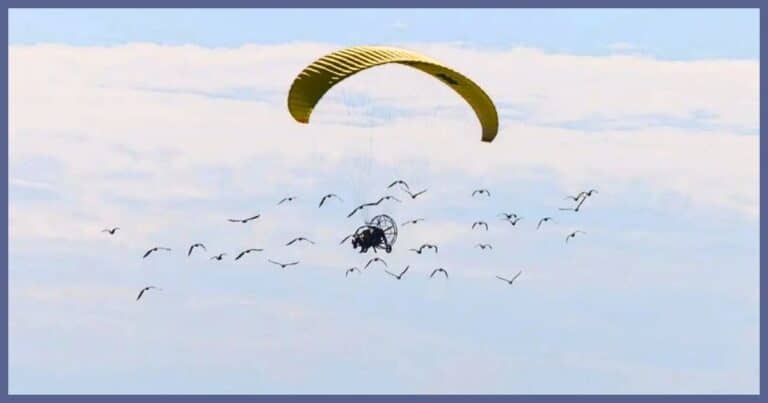
More and more species are going extinct due to changing climates across the world.
And sadly, it usually happens without anyone able to slow or stop it completely.
But one Austrian biologist was determined to save his favorite birds from going extinct for a second time. He just needed to come up with a flight plan.
Johannes Fritz originally taught his favorite birds, the northern bald ibis, a new path for them to migrate south for winter. The birds were safe.
Until now. New weather patterns have made it so the birds migrate later, getting stuck when the Alps become impassable due to snow.

Mr. Fritz and Helen Kalies, a volunteer, preparing for a training flight with the birds in southern Germany this month. Photo by Nina Riggio
Unable to make it over the mountain peaks, the birds face certain death.
Two or three years, and they’d be extinct again,” Fritz said.
So, once again, he knew only he could help them so he set out to create a new migration path. And just like before – he’d lead the way in his tiny aircraft.
The ibis was once only found in captivity in Europe. Eaten by Europeans to the point of extinction, their time was dwindling, when Fritz first began working with the birds.
He learned to fly, and turned an ultralight aircraft into a slow-flying cruiser, which allowed the young birds he was training to keep up.
Fritz took his first group of birds from Austria to Italy in 2004. Since then, he has made the trip more than 15 times, helping relocate 277 young ibises.
But now, the route he originally taught them has become too cold much sooner than it used to. From dying of the freezing cold, to starving to death unable to find food in frozen grounds, the birds face extinction once more.
At first, Fritz and his team managed to trap the struggling birds and then chauffeur them over the Alps to their summer home at Lake Constance in Germany and Austria. But, with that being too costly and unsustainable long-term, he knew they would need to learn a new flight plan.

The northern bald ibis.
So training with the birds began this summer. Each time, a team member would lead the birds on escorted flights over the path they would need to follow before winter. The new route would lead them to Spain’s southern Atlantic coast.
But it’s not without risks – the new route is 2,500 miles which is three times longer than their previous one. And while Fritz is a seasoned pilot, accidents do happen.
Over the years, though, Fritz has perfected his flying. When he first began, however, he said it was a lot of trial and error before he could soar like a bird. His first trips, he said, would often lead him headfirst into disaster.
But through years of trial and error, he succeeded. He even learned to fly like a bird, he said, soaring with ease.
“Luckily, whenever the motor stopped working, we were somewhere we could still land,” Fritz said. Once, he crashed so hard into a cornfield, his team feared him dead. When they found him nearly unscathed in a wrecked aircraft, his first response was: “We need to get this fixed immediately.”
But today, he and his team focus on keeping themselves safe, all in the hope that these birds can be saved.
Because for him, the risks are ‘necessary’.
“It’s not so much a job,” he said “but my life’s purpose.”
To watch Fritz in action, check out the video below!


